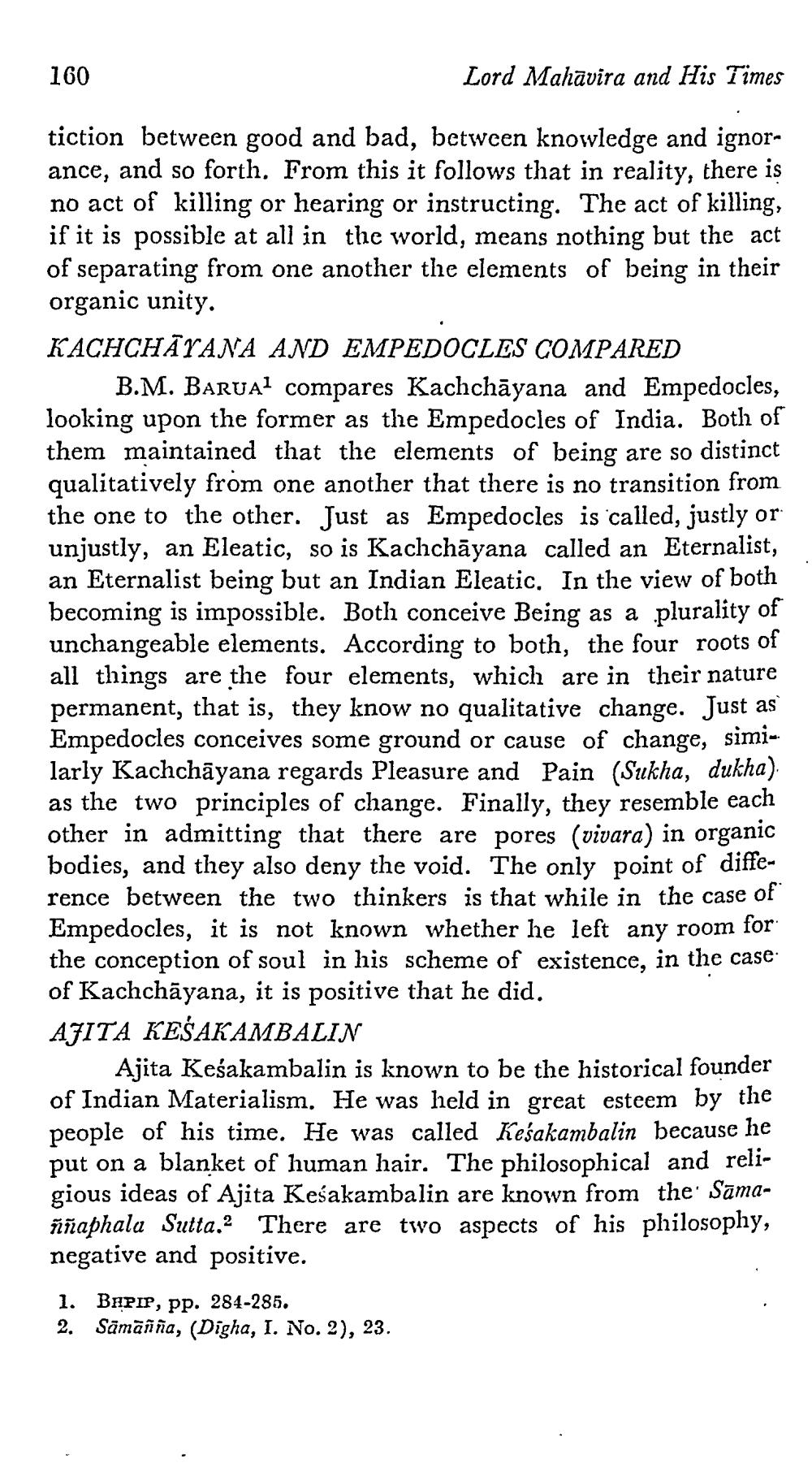________________
160
Lord Mahavira and His Times
tiction between good and bad, between knowledge and ignorance, and so forth. From this it follows that in reality, there is no act of killing or hearing or instructing. The act of killing, if it is possible at all in the world, means nothing but the act of separating from one another the elements of being in their organic unity. KACHCHĀYANA AND EMPEDOCLES COMPARED
B.M. BARUA compares Kachchāyana and Empedocles, looking upon the former as the Empedocles of India. Both of them maintained that the elements of being are so distinct qualitatively from one another that there is no transition from the one to the other. Just as Empedocles is called, justly or unjustly, an Eleatic, so is Kachchāyana called an Eternalist, an Eternalist being but an Indian Eleatic. In the view of both becoming is impossible. Both conceive Being as a plurality of unchangeable elements. According to both, the four roots of all things are the four elements, which are in their nature permanent, that is, they know no qualitative change. Just as Empedocles conceives some ground or cause of change, similarly Kachchāyana regards Pleasure and Pain (Sukha, dukha) as the two principles of change. Finally, they resemble each other in admitting that there are pores (vivara) in organic bodies, and they also deny the void. The only point of difference between the two thinkers is that while in the case of Empedocles, it is not known whether he left any room for the conception of soul in his scheme of existence, in the case of Kachchāyana, it is positive that he did. A7ITA KESAKAMBALIN
Ajita Kesakambalin is known to be the historical founder of Indian Materialism. He was held in great esteem by the people of his time. He was called Kesakambalin because he put on a blanket of human hair. The philosophical and religious ideas of Ajita Kesakambalin are known from the Samaññaphala Sutta. There are two aspects of his philosophy, negative and positive. 1. BAPIP, pp. 284-285. 2. Sāmāñña, (Digha, I. No. 2), 23.




